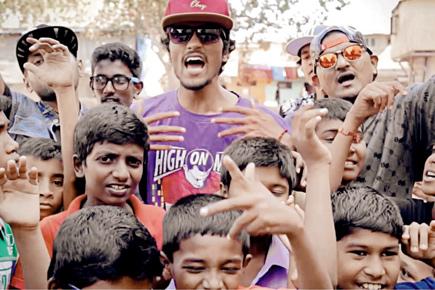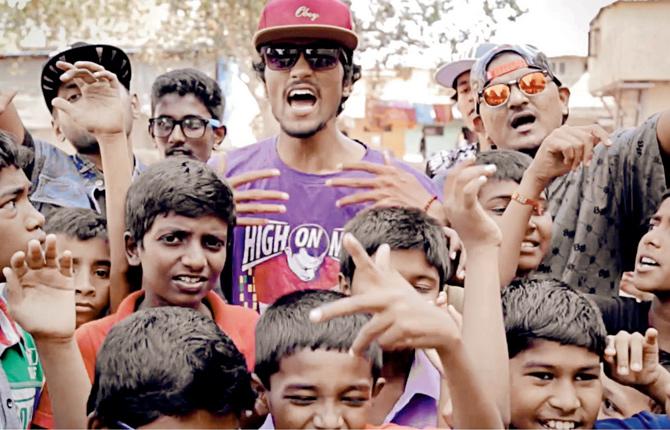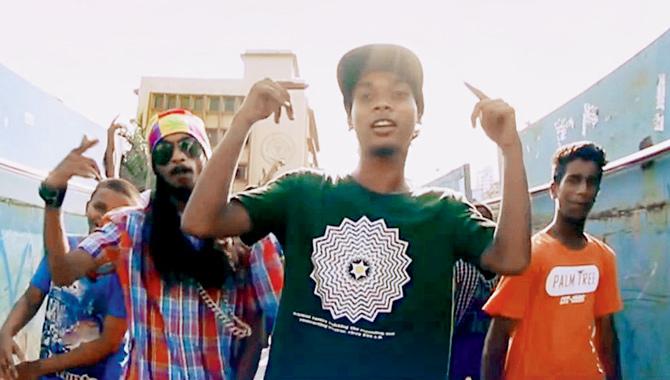Cyrus Oshidar's new web series tells stories of India's young, underground rappers, who discuss their issues in their bhasha

Aklesh Sutar, aka Mawali, rapping with street kids
ADVERTISEMENT
Till three months ago, when Cyrus Oshidar’s 101 India, a youth portal, approached Dharmesh Parmar to be a part of their upcoming web series, Hip Hop Homeland, his parents had no idea their son was a popular underground rapper. "My parents would think I’m good for nothing as I would spend a lot of time out of the house, practising rap, unknown to them. But when the crew came over, my folks finally realised I wasn’t a loafer."

Aklesh Sutar, aka Mawali, rapping with street kids
Parmar features in one of the 11 videos in Oshidar’s digital series that captures the underground rapping scene in the country. The web series premiers on January 20, and will feature various artistes from Mumbai, Kashmir, Shillong, Punjab, Kolkata and parts of South India. "Although the hip hop scene in the county is almost a decade old, it was seen more as a culture of cocaine-snorting, merc-cruising boys with beautiful women. These youngsters rap about real issues that affect them like poverty, freedom, class and inequality" says Cyrus Oshidar, Chief Creative Officer, 101India.
 Dharmesh Parmar with the Swadesi crew in a still from the series
Dharmesh Parmar with the Swadesi crew in a still from the series
Parmar lives in a chawl in Naigon, a rundown neighbourhood, where he says, children spew expletives like they’re mouthing nursery rhymes. The narrow gullies that see their fair share of brawls, is also the landscape that provides fodder for Parmar’s Gujarati rap songs. "My initial songs were inspired by beggars, boys smoking weed and hiding from cops and the rigours of train travel," says Parmar, who was inspired by a documentary on the American rapper, 50 Cent.
The 18-year-old goes by the name of Tod Fod, and is part of a rap crew Swadeshi, that comprises graffiti and b-boying artistes. The members rap in Hindi, Gujarati, Malyalam, Tamil and Bengali, and most of its members come from middle and lower middle class areas of Sion, Andheri East and Dadar. "I adopted the name Tod Fod to convey that nobody can mess with me," he says. Although his initial compositions were loosely-strung verses in English,
it was fellow rapper, Aklesh Sutar, who prodded him to rap in his own ‘bhasha’.
Marathi rapper Sutar who lives near Mahakali caves in Andheri East, says "My songs are far removed from hits like Honey Singh’s Chaar Botal Vodka. Where I live, people don’t have money for four bottles of vodka. How can I rap about money when I don’t have any?" asks the 21-year-old. Sutar aka Mawali, is a name given to him by his mum, thanks to his loony ways, low-waisted pants and outlandish hairstyle. Mawali believes in going back to roots. His songs incorporate elements of Gondhal, a dramatic narration of mythical stories in Marathi. "Over the years, the form has diluted as lyrics seem incomprehensible. I’m attempting to revive it," he says.
The show, says Oshidar, was lying on the backburner for more than a year, due to lack of takers. "The clients had their reservations about producing a concept that they felt might not work. We decided to produce the show ourselves as we felt these stories need to be told," adds Oshidar. And then his team panned out to different parts of India to discover rap artistes. Oshidar feels these boys challenge the notion that only escapist fantasies work in India. "The sugar-coated romance that we see in Bollywood might have takers, but there’s also audience for the angst and rebelliousness these boys express. Our Sanskaari geniuses should take note. India can absorb elements from other cultures and come up with a potent form of its own."
 Subscribe today by clicking the link and stay updated with the latest news!" Click here!
Subscribe today by clicking the link and stay updated with the latest news!" Click here!








